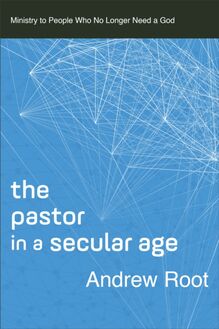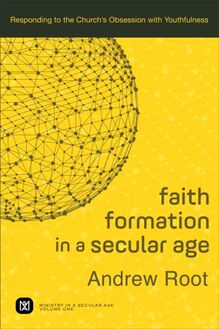Churches and the Crisis of Decline (Ministry in a Secular Age Book #4) , livre ebook
207
pages
English
Ebooks
2022
Vous pourrez modifier la taille du texte de cet ouvrage
Obtenez un accès à la bibliothèque pour le consulter en ligne En savoir plus
Découvre YouScribe et accède à tout notre catalogue !
Découvre YouScribe et accède à tout notre catalogue !
207
pages
English
Ebooks
2022
Vous pourrez modifier la taille du texte de cet ouvrage
Obtenez un accès à la bibliothèque pour le consulter en ligne En savoir plus
Publié par
Date de parution
01 mars 2022
Nombre de lectures
0
EAN13
9781493434954
Langue
English
Poids de l'ouvrage
1 Mo
Publié par
Date de parution
01 mars 2022
EAN13
9781493434954
Langue
English
Poids de l'ouvrage
1 Mo
Half Title Page
Title Page
Copyright Page
© 2022 by Andrew Root
Published by Baker Academic
a division of Baker Publishing Group
PO Box 6287, Grand Rapids, MI 49516-6287
www.bakeracademic.com
Ebook edition created 2022
Ebook corrections 10.20.2022
All rights reserved. No part of this publication may be reproduced, stored in a retrieval system, or transmitted in any form or by any means—for example, electronic, photocopy, recording—without the prior written permission of the publisher. The only exception is brief quotations in printed reviews.
Library of Congress Cataloging-in-Publication Data is on file at the Library of Congress, Washington, DC.
ISBN 978-1-4934-3495-4
Scripture quotations are from the New Revised Standard Version of the Bible, copyright © 1989 National Council of the Churches of Christ in the United States of America. Used by permission. All rights reserved.
Baker Publishing Group publications use paper produced from sustainable forestry practices and post-consumer waste whenever possible.
Dedication
To Kara Root in gratitude for life together!
Contents
Cover
Half Title Page i
Title Page iii
Copyright Page iv
Dedication v
Preface ix
1. When the Church Becomes a Pub, and the Immanent Frame Our Map 1
2. Brother Trouble and Meeting the Exorcist’s Son: The Beginning of Karl Barth 25
3. A Funeral for a Church—a Funeral That Remakes a Church 41
4. An Apple Tree and the Incoherence of “God Is God” 53
5. The Church Can’t Know How to Find God 69
6. The Church Is Not the Star of Its Own Story 83
7. Welcome to Crisis Mode 93
8. Wedding Blunders and Brotherly Love 109
9. Say Goodbye to Being and Give Me More Busyness 117
10. A Shady Obituary and the Need to Wait 133
11. Waiting Sucks but Resonance Is Life 151
12. Waiting Is Living: The Church and Resonance 163
13. When Mozart Goes Straight Into and Through You 183
14. Pietism and Its Discontents: A Dialectical Escape from Individualism and Religion 199
15. A True Ghost Story and the Birth of Watchwords 219
16. Getting Real with a Dialectical Demand 239
17. Deepening the Dialectic: Avoiding Sledgehammering the Ceiling 261
Index 283
Back Cover 289
Preface
The first draft of this book was composed in lockdown. Yep, it’s a COVID-19 lockdown baby! As an introvert who is an avid indoorsman, I thought I was built for quarantine. But that ended up not being the case. I found it difficult, haunting, and at times depressing. To keep the darkness from getting to me, I’d drag myself out of bed earlier than usual to type away at this project. It helped. I spent my evenings watching TV (well, honestly, that was no change from before COVID—TV is kind of my jam). There were a few highlights to the hundreds of shows I watched during the months of lockdown.
Maybe it was the COVID effect, but I found myself falling deeply for Dark , a mind-bending German show about time travelers. 1 It’s like if Lost had a cool German cousin who smoked cigarettes, was tatted out like Lil Peep, quoted Schopenhauer, and listened to emo rap. It’s good! All the time travel is so confusingly awesome!
Another quite different highlight was Hamilton . My family was one of the millions who streamed it on Disney+ on the Fourth of July. I liked it more than I thought I would—or was willing to admit to my wife and kids. (Okay, I loved it! But I played it cool because I didn’t need the “I told you so” refrain.)
This book is a little like those shows: part time travel saga, part contemporary musical update to a historical figure (without the music and costumes). I figure if Lin-Manuel Miranda can make Alexander Hamilton interesting, I can do the same for Karl Barth (I know, the hubris!). I’m not under any delusion that there is a musical future for this book. I’m not even suggesting that this book will be wonderfully entertaining (I’d take mildly ). But I have tried to retell the story of Karl Barth in a way that looks more deeply at his ten years as pastor. I’ll explore whether Barth’s early theology gives us any helpful ways of thinking about the church and how his early theology calls us to address and live within the secular age we have inherited. I ask the reader to recognize that my focus is on Pastor Barth. I want to show how the great Karl Barth must be seen as a pastor.
This is where time travel comes in.
As my earlier projects (particularly the Ministry in a Secular Age series) have sought to show, we are living in a time when it’s much harder to point to, and therefore build communities around, robust articulations of God’s action in the world. The church and its local congregations appear to be in a crisis. We keep interpreting this crisis as the loss of people and resources, but it’s really the radical transformation of belief itself. I contend, and I hope to show, that Pastor Karl Barth saw this in the early twentieth century. What Barth didn’t have was Charles Taylor’s deep description of modernity. Barth intuited much of this, but he didn’t have Taylor’s articulation of the immanent frame in particular (a culturally imposed map or frame we receive from culture that leads us to see things as mostly, if not completely, natural and material). Though Barth didn’t have this language or description, the immanent frame was what Pastor Barth was seeking to address. Barth, through his pastoral ministry, was seeking to offer a new modern pastoral theology that could address the immanent frame. What I’ll do in this book, all-time-travel-like, is import Taylor’s descriptive language from the early twenty-first century back to Karl Barth in the early twentieth. Doing so will no doubt cause some jaggedness, but I’m trusting that it will be helpful. Ultimately, this book hopes to show that Pastor Karl Barth is a modern theologian addressing the immanent frame. Further, I hope that uncovering how Barth made a case for a living God inside this immanent frame can inspire the imagination of pastors and the congregations they lead.
The point of this book is not to offer a case for Karl Barth. The book’s point is not even to make Karl Barth the gravitational center of the project. Instead, I hope that in using Barth’s story I can offer some of my own theological construction. This book is a thought experiment that desires to present a constructive practical ecclesiology that draws inspiration and direction from Barth—not unlike Lin-Manuel Miranda’s objective to not offer a historically defensible case for Alexander Hamilton but instead access Hamilton’s story to push the imagination of his audience. To offer my own constructive ecclesiology, I’ll be putting Barth’s story and thoughts in conversation with others like Erich Fromm and Hartmut Rosa. To be clear, this project is not necessarily intended for those studying Barth but for those pastoring churches in a secular age. My objective in telling Barth’s story is to explore what his theology means for the life of the church in our time and how it gives us a different vision for the church in a secular age framed in immanence.
Alongside Barth’s story, I tell the story of a fictional local congregation. That fictional church closed, and the building became a microbrewery, but I will offer an alternate history, retelling their story to see what might have helped them find the life they needed to remain active. I’ve done this kind of fictional storytelling before to flesh out theological ideas. I suppose in some way it’s become a genre I’ve embraced. It fits well into what Barth himself called “irregular dogmatics.” I’ll admit it’s irregular to use this kind of storytelling, particularly in the academic guild, but I think it’s advantageous. Since the beginning of my career, my focus has been on the church in its most concrete form. I’ve had the privilege of giving thousands of presentations to churches and church leaders. I’ve discovered that the best way to teach theology in the church is not through intricately laying out theologians’ doctrinal differences but through stories of concrete people encountering a living God. Pedagogically, it’s best to show , not tell , people theological ideas. Thus I’ve shaped this theological project around stories (showing).
Of course, I hope academic groups can wrestle with the ideas. I believe there are contributions to fields of study here. But my first audience is the church and pastors on the ground. Below you’ll hear the story of Pastor Karl Barth told alongside the story of a small congregation, called Saint John the Baptist, seeking life amid its decline. I’ll show that it’s the immanent frame and the loss of a God who is God—not the loss of relevance and resources—that threatens the church. Against this backdrop Pastor Barth’s own breakthroughs will be salutary. My hope is that the theology I build in dialogue with Barth (and its importance for our ecclesial moment) will become evident as it’s placed alongside the story of this little church.
I’m deeply thankful for a handful of friends and colleagues who read parts or all of the manuscript, giving me invaluable feedback. David Wood, Jon Wasson, and Derek Tronsgard read the whole manuscript, providing insightful feedback on pastoral ministry. Wes Ellis, who knows my work better than I do, Dave Brunner, and Erik Leafblad offered helpful feedback as able constructive theologians. Christian Collins Winn read parts of the manuscript, offering important help on the Blumhardts. Kait Dugan provided insights on the first few chapters. My former student Amy Janssen ran down and photocopied dozens of articles for me. Blair Bertrand, who has been one of my closest friends and most trusted dialogue partners since our days at Princeton, helped with this work in multiple places. Bob Hosack and Eric Salo again have been amazing to work with. Bob’s vision and Eric’s skill have made this project so much better. Finally, I need again and again and even again to thank Kara Root for her patient reading and editing of this project. It wa




